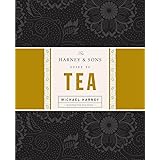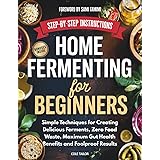The allure of a beautifully crafted coffee drink extends beyond its taste; it encompasses a visual artistry that elevates the entire experience. Among the myriad patterns, the latte art heart stands as a quintessential starting point, signaling skill and care. If you have been captivated by the elegant designs adorning your morning brew, the video above offers a fantastic visual guide to mastering your first latte art pattern. This foundational design empowers aspiring baristas to transform everyday coffee into a work of art, proving that even beginners can achieve impressive results.
Diving into the world of latte art requires understanding the delicate interplay between perfectly extracted espresso and impeccably frothed milk. This guide expands on the video’s essential techniques, providing deeper insights and practical advice to help you pour your very own stunning latte art heart.
The Foundation of Flavor and Form: Perfecting Your Espresso Shot
Before any artistic pouring begins, the quality of your espresso shot is paramount. A truly great latte art creation rests upon a well-extracted espresso, characterized by its rich flavor and a thick, reddish-brown layer of crema. Crema is essentially an emulsion of coffee oils, giving the espresso body and serving as the ideal “canvas” for your milk.
As the video suggests, swirling your espresso cup gently is a crucial initial step. This action helps to incorporate the crema evenly throughout the shot, creating a homogeneous, smooth surface. A consistent crema allows the white microfoam to glide gracefully, ensuring your beginner latte art pattern emerges clearly without blotches or disruptions. Without this crucial mixing, the crema might break up, leading to a less stable canvas for your developing design.
Achieving the Ideal Texture: Silky Milk for Beginner Latte Art
The texture of your milk is arguably the most critical component for successful latte art, especially for beginners. The goal is to produce “silky textured milk,” also known as microfoam, which boasts a consistency akin to wet paint or perfectly melted white chocolate. This delicate, velvety texture allows the milk to flow smoothly and integrate harmoniously with the espresso, enabling precise control during pouring.
Achieving microfoam involves two primary stages: aeration and texturing. Aeration introduces a small amount of air into the milk, creating tiny, uniform bubbles that are barely visible to the naked eye. This stage is usually brief, lasting only a few seconds. The texturing phase then incorporates these tiny air bubbles throughout the milk, heating it evenly to approximately 140-150°F (60-65°C). The NanoFoamer Lithium, as mentioned in the video, is an excellent tool for home baristas to create this specific, high-quality microfoam, providing a consistent and smooth texture that is ideal for all forms of beginner latte art. A well-textured milk will pour like a dream, forming crisp, defined lines and patterns.
Preparing Your Canvas: The Initial Pour Technique
With your espresso ready and your milk perfectly frothed, it is time to set the canvas for your latte art. This initial pouring stage, often overlooked by beginners, is fundamental to establishing the base upon which your art will blossom. The technique involves pouring a thin stream of milk from a few inches above the cup, allowing it to gently fall through the crema.
Maintaining a steady, thin stream ensures the milk integrates beneath the crema, rather than sitting on top as a frothy mess. This creates a clean, golden-brown canvas on the surface of your drink, signaling that the espresso and milk have properly mixed. As your cup fills to about half to three-quarters full, this careful integration prepares the perfect backdrop for the microfoam to then appear and form your desired pattern. This controlled initial pour ensures your subsequent artistic actions have a stable and responsive surface.
Unleashing Creativity: Pouring the Latte Art Heart Pattern
Once your canvas is set, the exciting moment of creating the heart pattern arrives. This stage demands focus and a gentle confidence, translating your perfectly textured milk into a visual masterpiece. Each movement contributes to the final shape, showcasing the elegance of simple pouring techniques.
Lowering the Jug and Placing the Microfoam
As the video demonstrates, lowering the tip of your milk jug closer to the surface of the coffee, almost touching the crema, is essential. This proximity allows the dense microfoam, the “white art” component, to gently rest on top of the established canvas instead of sinking. The microfoam then spreads outwards, beginning to form the initial white shape of your heart. Think of this as carefully placing a soft blanket onto a smooth bed, ensuring it settles gently without disturbing the surface beneath.
The Push and the Wave for Your Heart Design
With the jug lowered, increase the speed of your pour slightly, aiming just above the center of the cup. This increased flow pushes the microfoam outwards, causing the white circle to expand. For a heart shape, maintaining a steady, slightly faster pour allows the white to spread symmetrically. If you introduce a gentle, controlled wiggle of your wrist at this stage, you can create a ripple effect, forming a wider base or a series of concentric waves, which provides the foundation for the heart’s characteristic rounded top. This pushing action is crucial for defining the size and prominence of your latte art heart.
The Final Flourish: Creating the Distinctive Heart Shape
Just before your cup is completely full, a pivotal move completes the heart pattern. Smoothly and steadily, lift the tip of your jug upwards, away from the coffee surface, while simultaneously pulling the stream of milk straight through the center of the white circle. This action creates a thin line that bisects the round shape, drawing the two sides inwards to form the recognizable point of the heart. The finesse of this final pull determines the sharpness and symmetry of your latte art heart, providing that unmistakable finishing touch. Consistent practice with this final step transforms a simple white circle into an elegant, pointed heart, a hallmark of exquisite beginner latte art.
Steaming Hot Answers for Your Latte Art Queries
What is latte art?
Latte art is the visual design created on top of a coffee drink, enhancing its appeal beyond just taste. The heart pattern is a classic starting point for beginners.
What two main components are essential for creating good latte art?
Achieving great latte art requires perfectly extracted espresso and impeccably frothed milk, specifically a velvety texture called microfoam.
Why is the quality of espresso important for latte art?
A well-made espresso shot provides a thick, reddish-brown layer of crema, which serves as the ideal, stable ‘canvas’ for pouring your milk designs.
What type of milk texture is best for latte art?
The best texture for latte art is ‘silky textured milk’ or microfoam, which should have a smooth consistency similar to wet paint or melted white chocolate.
What is the first step in pouring latte art once the espresso and milk are ready?
The initial step is to pour a thin, steady stream of milk from a few inches above the cup, allowing it to gently mix beneath the crema and create a clean canvas.







